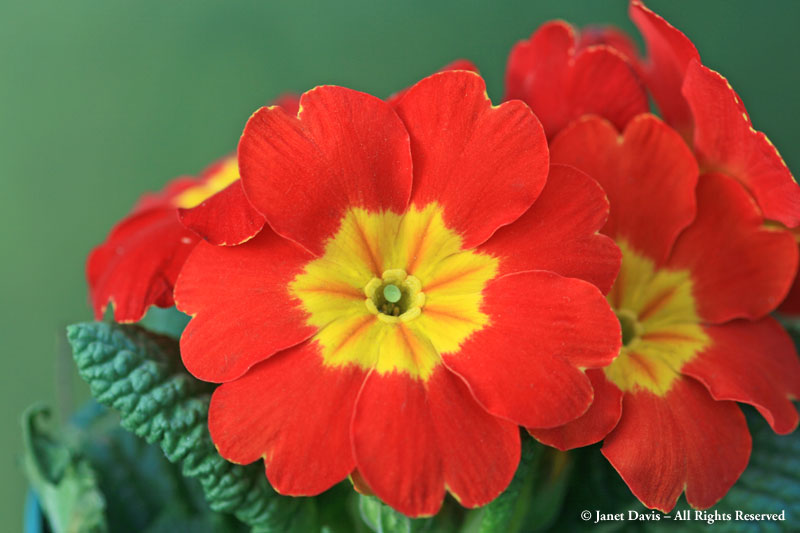Though fun to display in a basket on the kitchen table or in a spring-themed pot outdoors, polyanthas aren’t very hardy and tend to die off the next winter. To try to keep one going, plant it in part shade and moist, humus-rich soil and give it protection around the crown after the first freeze.
Primroses are interesting botanically, too. Look closely at the center of the flowers. Some have the female stigma thrusting prominently up on its long style with the pollen-bearing anthers far below (“pin” flowers), while others show a ring of male anthers well above the stigma, which sits concealed atop a very short style below (“thrum” flowers). Botanists call this arrangement of sexual organs heterostyly, a scientific word for a genetic chastity belt since it prevents the plants from self-pollinating, thus keeping the species strong.
Primroses have fascinated collectors for centuries, especially the fantastic Auricula types with their frilly, colourful flowers on stems rising from a rosestte of basal leaves. Auriculas originated in the 16th century with crossings of yellow Primula auricula with red and blue Primula hirsuta. A century later, as the crosses became ever more fanciful, French and Belgian Huguenot weavers built open cupboards to showcase their treasures as ‘theatre’, and to protect them from inclement weather. I loved seeing this whimsical Auricula Theatre at the New York Botanical Garden one April a few years ago. An annual tradition since 2007, it was designed by the Dowager Marchioness of Salisbury. 
If you’re fortunate to have a really boggy area like this wonderful stream bed at the Takata Japanese garden at Victoria’s Horticulture Centre of the Pacific, you will likely have good luck with the elegant and hardy candelabra primroses (Primula japonica), whose flowers are born on sturdy stems 30-60 cm (1-2 ft) above the basal leaves. Here a reddish one (likely ‘Miller’s Crimson’) grows with ferns and other shade-loving perennials, adding just the right touch to a predominantly green scene.


